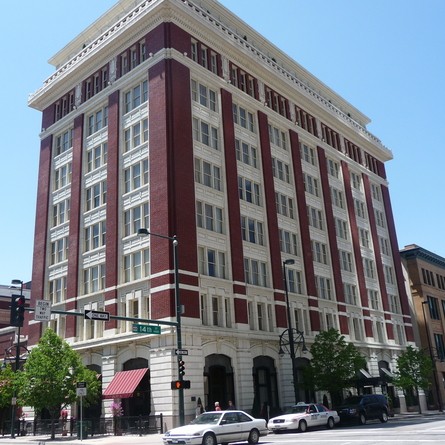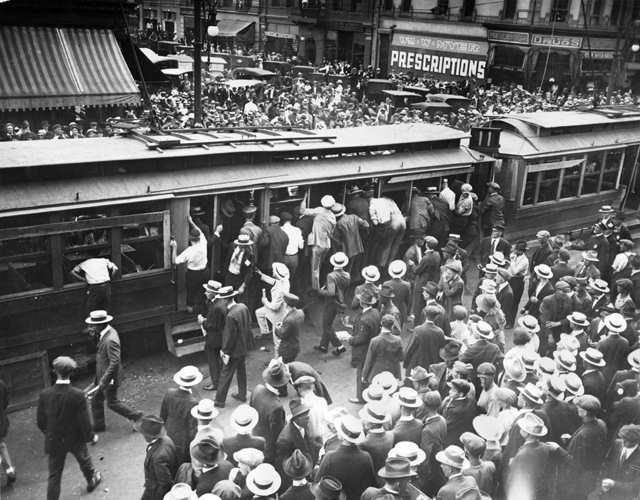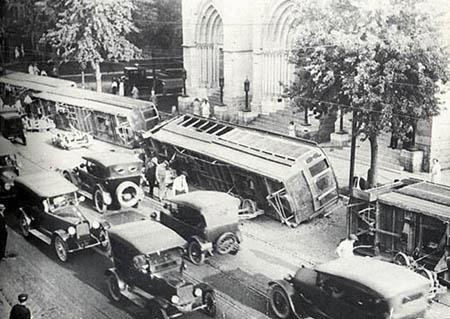Tramway Building and the Denver Tramway Strike of 1920
Introduction
Text-to-speech Audio
This eight-story building was completed in 1911 for the Denver Tramway Company. Now home to a boutique hotel, the building once stood in the center of one of Colorado's most significant labor conflicts. The building still bears the scars of that conflict in the form of bullet holes fired by participants and police in the 1920 Tramway Strike.
Images
This historic building was designed in the Renaissance Revival style of architecture and features terra cotta and coffered plastered ceilings.

Protesters attacked the property of the Tramway company on the fifth day of the strike.

Protesters overturned five tram cars on Colfax near the Cathedral.

Backstory and Context
Text-to-speech Audio
The strike was the result of the company's decision to not increase wages to match the rapid inflation that resulted during and immediately following World War I. From the perspective of the company, however, higher wages were only possible if the government reversed its decision to prevent fare increases. At this time, streetcar fare rates affected most of the city's residents. When a new mayoral candidate won election promising to not only prevent fare increases but restore fares to pre-war rates, the Tramway Company announced that they would be reducing the pay of current employees. In response, unionized Tramway conductors and other workers initiated a strike on August 1, 1920.
Within days, the strikebreakers and armed guards hired by company officials clashed with striking workers. The violence escalated quickly, leading to the death of seven men and severe injuries for another fifty. In response, the mayor and governor placed the city of Denver under military control. Two hundred and fifty soldiers occupied the city while the Tramway company replaced almost two-thirds of their workforce with strikebreakers. The company was aided by city leaders and a press that generally favored the company over the unionized workers, as well as a public that feared a union victory might lead to higher streetcar fares.
Neither the union nor the original Tramway company survived the strike, although the company was able to recover following bankruptcy proceedings that included the decision of city leaders to permit fare increases.
Within days, the strikebreakers and armed guards hired by company officials clashed with striking workers. The violence escalated quickly, leading to the death of seven men and severe injuries for another fifty. In response, the mayor and governor placed the city of Denver under military control. Two hundred and fifty soldiers occupied the city while the Tramway company replaced almost two-thirds of their workforce with strikebreakers. The company was aided by city leaders and a press that generally favored the company over the unionized workers, as well as a public that feared a union victory might lead to higher streetcar fares.
Neither the union nor the original Tramway company survived the strike, although the company was able to recover following bankruptcy proceedings that included the decision of city leaders to permit fare increases.
Sources
Stephen J. Leonard, “Bloody August: the Denver Tramway Strike of 1920,” Colorado Heritage Magazine 15, no. 3 (1995).
